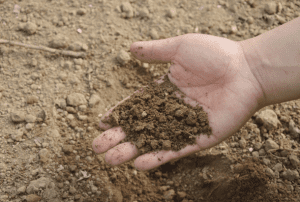Place nets high above the orchard for better fruit set, says Adelaide Uni
Research & ExtensionDid you know that the type of orchard netting you use can have significant impact on pollination services?
That’s according to Dr Katja Hogendoorn, senior researcher from the University of Adelaide’s School of Agriculture, Food and Wine.
Katja is leading a study to determine best practice orchard design to improve pollination for apple growers and, although the study is still underway, some preliminary findings are becoming clear.
Firstly, the research has found that the higher a net above the orchard, the more active bee populations are and fruit set is improved.

Dr Katja Hogendoorn, senior researcher from the University of Adelaide’s School of Agriculture, Food and Wine, presenting at the 2019 APAL R&D Day.
“Preliminary data indicates that allowing bees easy access to flowers outside the orchard improves hive health. Bees from hives placed in the middle of the orchard, under a roof that they cannot get through, collected less pollen and decreased in size. However, they collected more apple pollen, and may therefore provide better pollination.”
The study is also examining how pollen is transported through the orchard in order to determine just how close pollinisers need to be to fruiting trees. This piece of work is ongoing and the team will share results with industry to help apple growers design orchards that are optimised for pollination.

Netting in an orchard.
Speaking of pollinisers, Katja and her team are also working to determine the possibility of using autonomous vehicles to mobilise pollinisers – effectively bringing the trees to the bees. While more work is to be done, initial results indicate that using mobile polliniser units could effectively double fruit set.
Growers should be aware that this activity is its very early stages and much more work needs to be done to determine the commercial realities of autonomous pollenisers.
Katja will be presenting these findings in more depth at the Grower R&D Day in Melbourne on 1–2 September. This is a must-see event for growers interested in the latest in AgTech and orchard innovation – don’t forget to register today.
The Novel technologies and practices for the optimisation of pollination within protected cropping environments (ST19000) project is being delivered by Hort Innovation, from the Australian Government Department of Agriculture, Fisheries and Forestry part of its Rural R&D for Profit program and University of Tasmania, University of Adelaide, Plant and Food Research, University of New England and NSW Department of Primary Industries.




